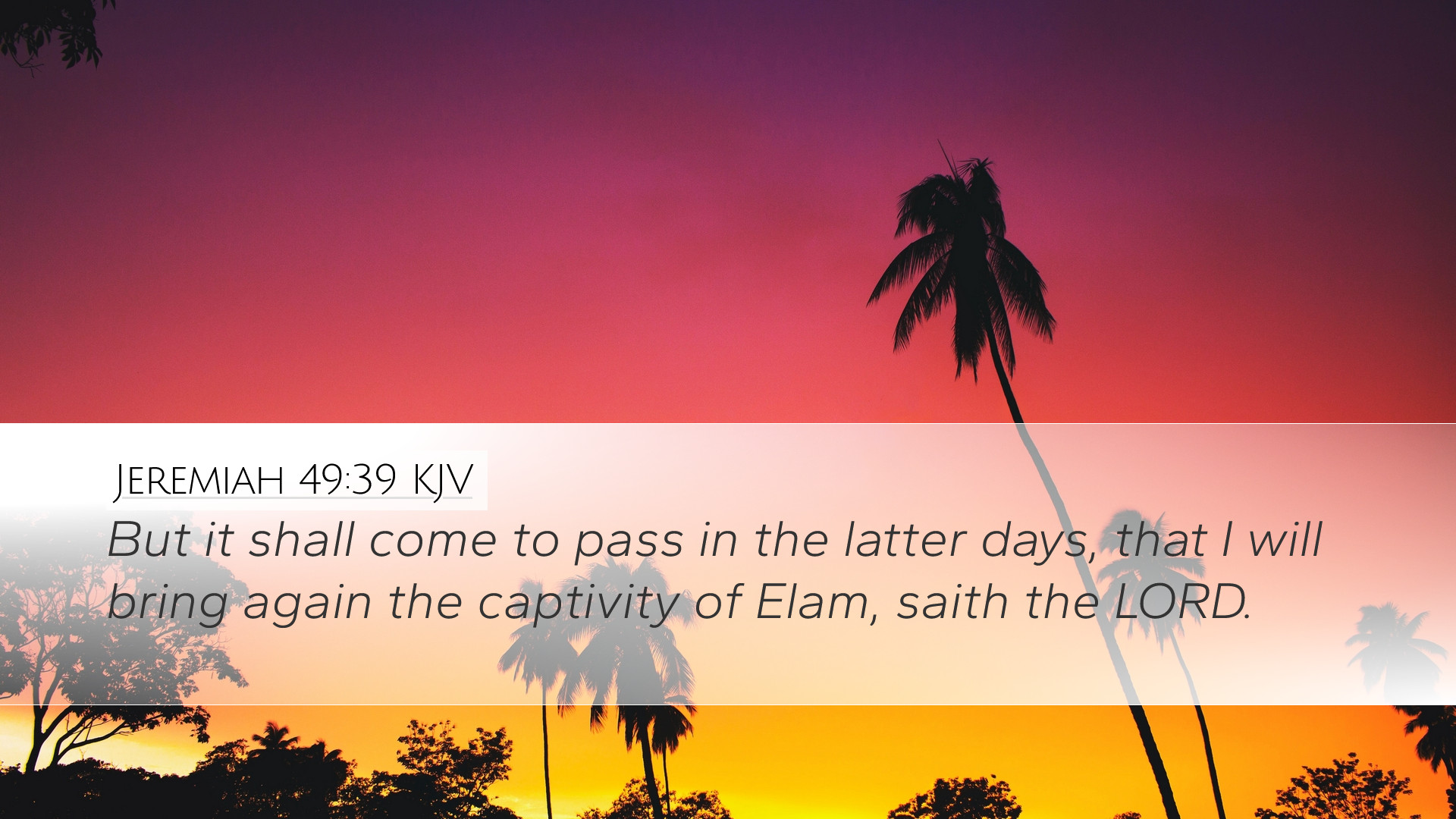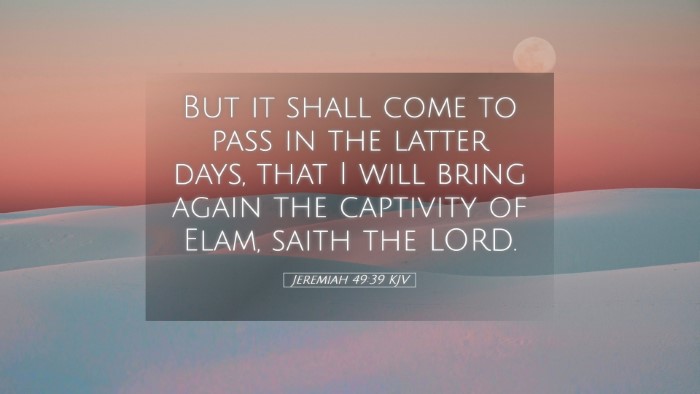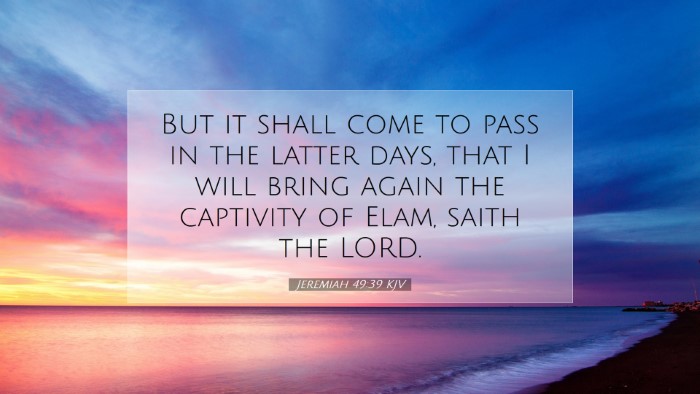Commentary on Jeremiah 49:39
Verse Context: Jeremiah 49:39 states, “But it shall come to pass in the latter days, that I will bring again the captivity of Elam, saith the Lord.” This verse is part of a prophecy concerning Elam, a region located in what is today southwestern Iran, known historically for its conflicts and shifting fortunes.
Introduction
The prophetic messages delivered through Jeremiah often included promises of restoration alongside judgments. Jeremiah 49:39 provides insight into God’s sovereignty over nations and His ultimate plan for redemption. The commentary delves into the implications of this restoration for the people of Elam, as well as the theological significance for believers today.
Understanding Elam
Elam was an ancient kingdom located east of Babylon, known for its rich culture and conflicts with Israel and Judah. Matthew Henry notes that Elam was often mentioned in the context of war and invasion, signifying its tumultuous history. The restoration of Elam speaks to God's redemptive power, demonstrating that no nation is beyond His reach.
Historical Significance
Albert Barnes emphasizes the historical context of Elam, indicating its people were taken into captivity, and yet, God promises to “bring again the captivity.” This suggests a future hope not only for Elam but for all nations facing despair. The prophecies serve to remind the Israelites that their God is engaged with the broader tapestry of human history.
Theological Implications
Adam Clarke’s commentary reflects on the broader theological implications of this prophecy. Elam represents the nations and people distant from God, yet it illustrates God’s willingness to restore and reconcile. For believers today, this speaks of hope — that regardless of current circumstances, God’s intention is ultimately towards redemption.
The Promise of Restoration
Divine Initiative: The phrase “I will bring again” indicates that it is God Himself who takes the initiative in restoration. This mirrors the patterns seen throughout the Scriptures where God interacts with His creation, often pursuing those who have strayed.
Future Expectation: The use of “in the latter days” suggests a forward-looking perspective that extends beyond immediate historical events. This has eschatological implications where believers are reminded of the hope and future fulfillment in God's plan. Both Matthew Henry and Albert Barnes reflect on the notion that God's restorations are often seen in both immediate and prophetic contexts.
Applications for Today
- Hope in Restoration: Just as God promised to restore Elam, He extends His promise of restoration to all who turn back to Him. This should encourage pastors and believers to preach a message of hope.
- God's Sovereignty: The assurance that God reigns over nations today encourages faith in His authority and control over current events. It serves as a reminder to trust His plans, even amidst chaos.
- Missionary Perspective: Understanding that God cares for all nations encourages a missionary heart. Elam's restoration can serve as a model for current engagement with countries deemed 'unreachable' for the gospel.
Conclusion
The prophecy concerning Elam in Jeremiah 49:39 serves as a profound reminder of God's character — His relentless pursuit of people and His promise of restoration. Through the lenses of Matthew Henry, Albert Barnes, and Adam Clarke, we glean not only the historical significance but also the theological depth of this verse, which resonates with current realities. As we engage with this text, may we find inspiration to trust in God's promises and actively participate in the work of reconciliation in our own lives and communities.


